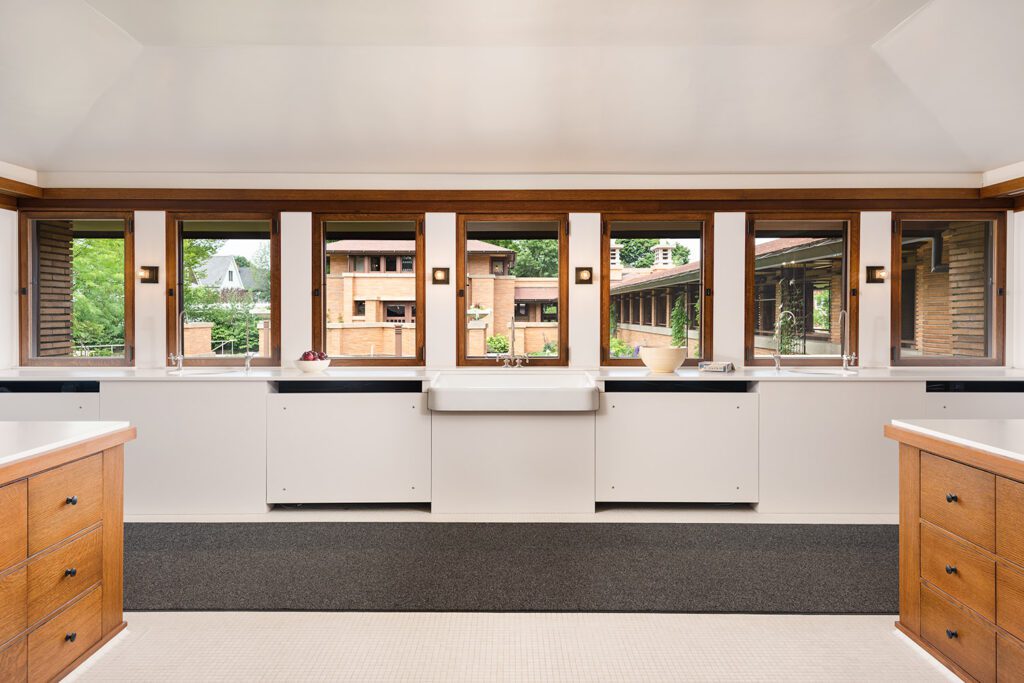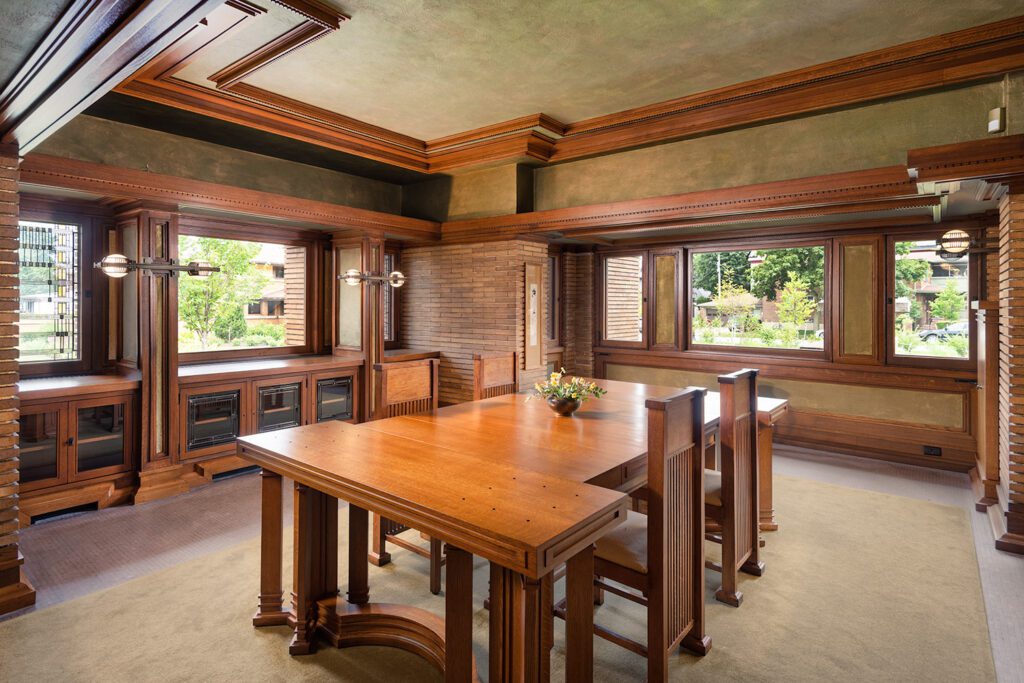Frank Lloyd Wright’s Martin House is a prime example of the transformative power of architecture.
Built between 1903 and 1905, the Martin House was designed by acclaimed American architect Frank Lloyd Wright as the city home for Buffalo business executive Darwin D. Martin and his family. The Martin House is characterized by its spatial openness, horizontal planes, pier and cantilever construction, and palette of natural colors and materials. It is considered one of the great achievements of Wright’s career, resulting from a remarkable partnership between client and architect.
Darwin D. Martin (1865-1935) was an accomplished business leader in the city of Buffalo. A self-made millionaire, he was a top executive for the Larkin Company—a rapidly expanding soap and mail-order operation. Tasked with finding an architect to design the firm’s new administrative headquarter, Martin’s attention was drawn to Wright whose works and reputation at the time were limited to Illinois and his native Wisconsin. Martin was also interested in having a new home built for his wife Isabelle and their family. In the end, Martin was pivotal in engaging Wright for both projects—two of the most important commissions of the architect’s early career.
Frank Lloyd Wright (1867-1959) is internationally recognized as one of the most important figures in 20th century architecture and design. His legacy is marked by his vision to create a new form of architecture based on the open landscape of the American Midwest. Wright redefined traditional concepts of structure and space by connecting the built environment to the natural world. He is best known for his Prairie style homes, efficient office buildings, innovative furniture, and decorative designs.
Described by Wright as a “domestic symphony,” the Martin House is a comprehensive residential estate. The property includes the main dwelling, a secondary house, a gardener’s cottage, and a series of interconnected buildings woven together within an integrated landscape. Art glass, furnishings, and other creative design elements—all conceived by Wright—give rise to a bold new vision of the home as a total work of art.
Martin House did not fare well over the years. It was abandoned, partially demolished, and neglected in the period following the Martins’ life there. With the resolve of many, an ambitious restoration effort to save this treasure began in earnest in 1992 and was completed in 2019. Today, Martin House stands as a compelling symbol of civic identity and cultural pride. It is a National Historic Landmark and a premier heritage destination within New York State’s network of historic sites.













